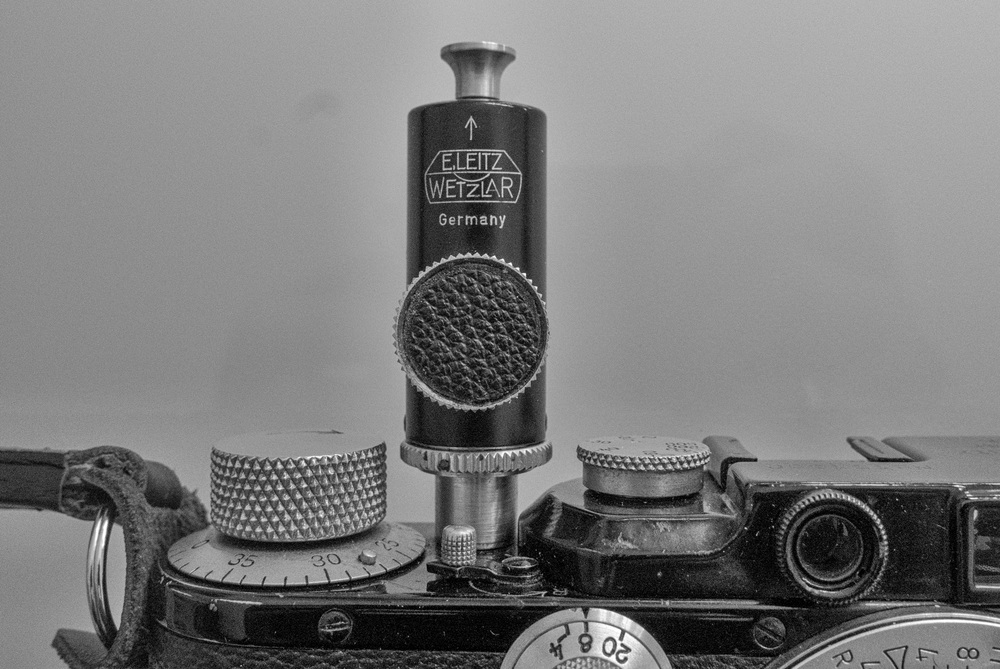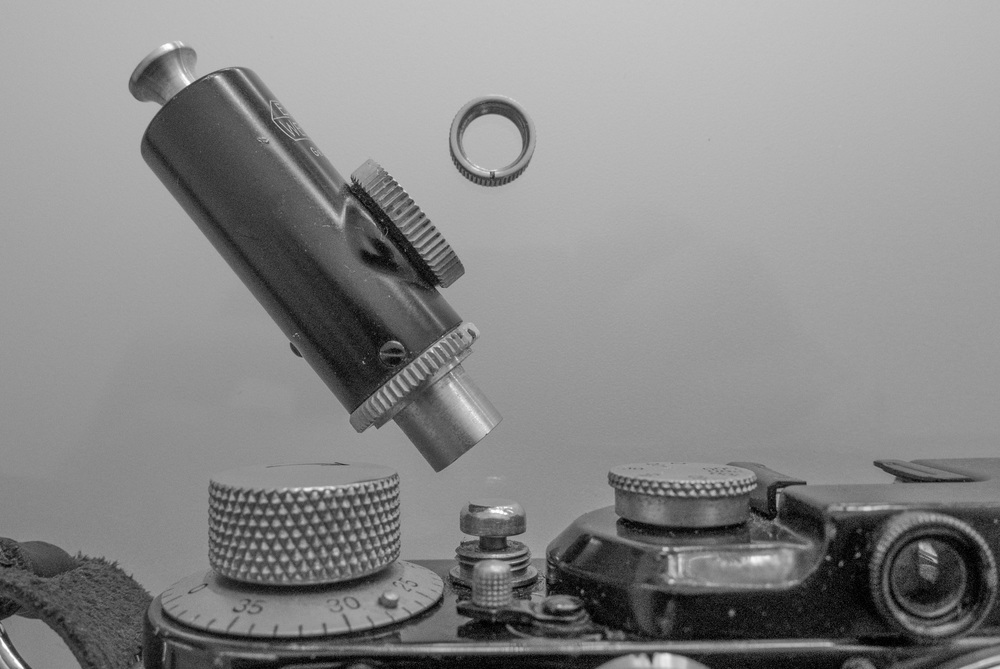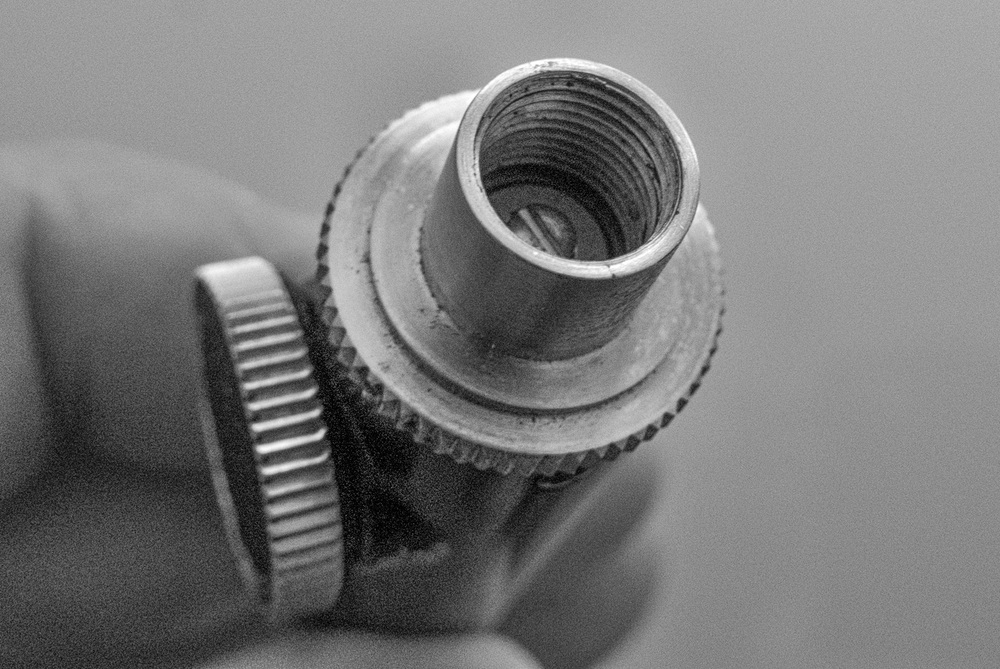
Last week our contributor John Shingleton in Australia emailed to say he had put a “small object” in the post. My interest was piqued. But I had to wait until the envelope arrived to discover more. The object turns out to be a Leitz APDOO, something I didn’t really know I wanted but which has now been welcomed warmly into my stable of Leica bits and pieces. I continue my voyage of discovery of Leica and Leitz lore.

This exquisitely crafted little device is a wind-up shutter release contraption for delayed action shots. It is the best way to do a selfie on Leica screw-mount cameras not equipped with a built-in timer.
Ingenuity
I never cease to be amazed at the ingenuity of Leitz engineers, not just in the mind-boggling range of accessories they produced (every one known intimately to keen collectors by its codename), but in the loving, painstaking execution of every single piece. The APDOO is no exception and John’s donated example is in mint condition. They don’t make ‘em like this any more.
It screws into the shutter release collar of all Leica’s cameras, from the 1925 Leica I Model A through to the last of the screw-mount cameras, the Leica IIIg which ceased production around 1960. Earlier cameras, certainly up to my 1935 III and probably for some years later, had a narrow shutter-button collar which had to be unscrewed before attaching the APDOO.

Lost collars
The APDOO was introduced in 1938 and later cameras had a wider collar which allows accessories to be screwed in without removal. According to our regular contributor William Fagan, our resident fount of knowledge on Leica collectibles, the fact that the removable collars of earlier cameras were so easily lost has resulted in many Leicas now appearing in a collarless state.
The APDOO is mechanical simplicity at its best. You just screw it over the shutter release, wind it up, using the large wheel, and then lift up the top lever to set the clockwork in motion. There is just enough time to run round and pose for your selfie.
This is a very welcome gift, thank you John, and I am now looking for an opportunity to use it for a selfie with an early Leica camera.

William Fagan comments:
A very nice present indeed. The APDOO was introduced in 1938 at a price of £1.3s.0d (£1.15 in modern money¹) and remained in the catalogue until 1965. You wind it up and then press the button. As for being the first ‘selfie stick’, there was a non-Leitz pneumatic self-timing device called the ‘DIREKT’ available from 1932 and a US version from 1935 called the ‘DIRON’. There are, of course, the various remote release cables but none of them would be long enough for a selfie unless you had a mirror like Ms Bing in this feature.
If you fancy an APDOO of your very own (who wouldn’t?) Red Dot Cameras has a couple in stock at the moment, one with and one without the leather case.
And a word from John Shingleton:
Pleased that I like the APDOO, John Shingleton has tried to remember where he got it from in the first place:
It was left behind when I disposed of all my Leica collection in 2008 and I only found it by chance a couple of weeks ago. I cannot remember where I bought it but have narrowed it down to two places: Either Camera House in Adelaide, my favourite Leica store, or from a small shop in Frankfurt. I have a vague memory of Camera House giving me the device when I bought a 90mm f/2 Summicron in 1986.
On the other hand, I also have a recollection that it was among a few things I bought in a very small camera store down an alleyway near Frankfurt Hauptbahnhof when I went to the Motor Show in 1989. The little shop in Frankfurt was a true treasure trove of Leica desirables. That October they had about five Luftwaffe Leicas in the store (a local collector must have died). I nearly bought one but settled for a lens and some other bits and pieces including, possibly, the self timer. I wonder if the shop is still there. I am sure that it will have gone like so many.
John Shingleton’s blog can be found at The Rolling Road.
For more design clues from Leica’s miniature masterpieces read this fascinating article.
________________________________________________
1. £1.3s.0d in 1938 is roughly equivalent to £65 in 2016 based on historic standard-of-living values.

These are very useful little gadgets, a great advance on the Direkt which is a rather crude device. The one you have is the second (post-war) type with the flared knob at the top. The first type has a knurled knob which is more difficult to pull up. Curiously someone has stuck a neat disc of vulcanite over the dial, not sure why as it covers up the indicator marker on the dial. This tells you from a distance that your time is up! Your disc should be matt chrome with a black indicator mark, the early ones had a black disc with the indicator marker left in nickel.
Richard
Dear Richard
Thank you for this extra information. I had wondered about the additional disc cover but it is so well done that I simply assumed it was one of the many variations on the theme. I hadn’t realised the significance of the indicator window so we can only assume someone along the line thought they could dispense with it and make the thing prettier. All this Leitz historical stuff is fascinating.
Mike
I am not the kind of bloke to start collections, but I am fascinated by those that do and the enthusiasm amongst collectors.
I really enjoy reading William Fagan’s contributions here, and I see Mike gradually being sucked into the Barnack collecting pastime..
Some of the innovations are interesting and I can’t really add anything of particular interest, save to note that Leica seem to have recently forgotten just about the most important innovation, which is featured in all of these pieces about the old Barnacks…
…The viewfinder!